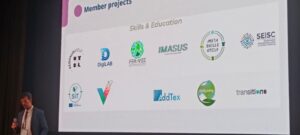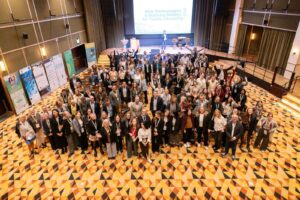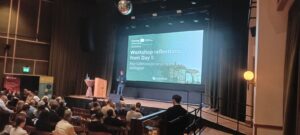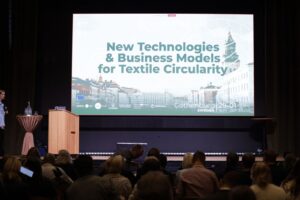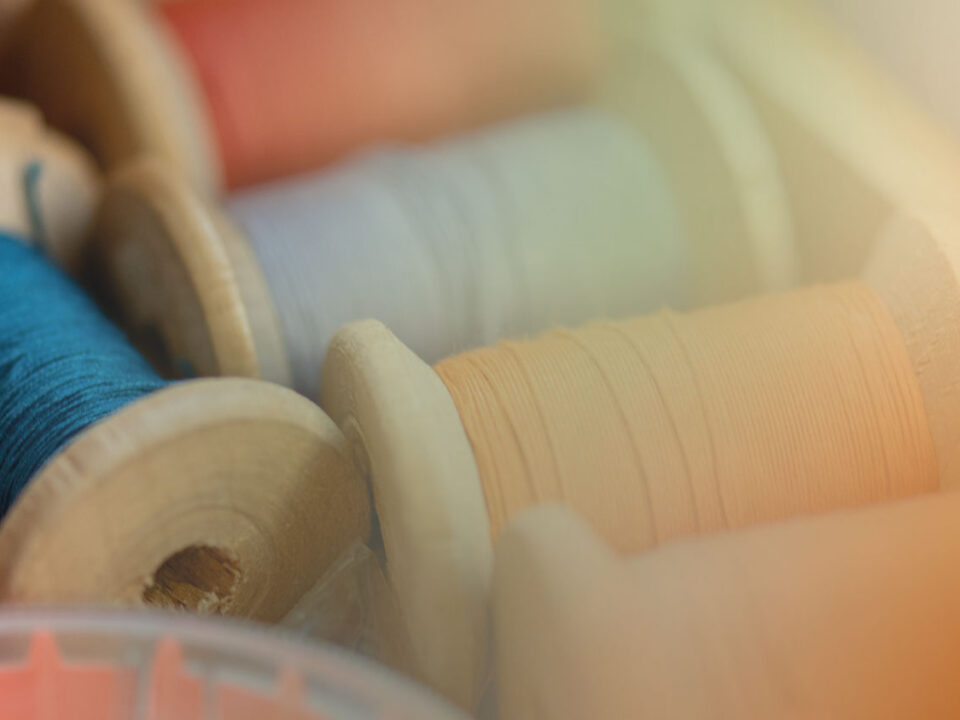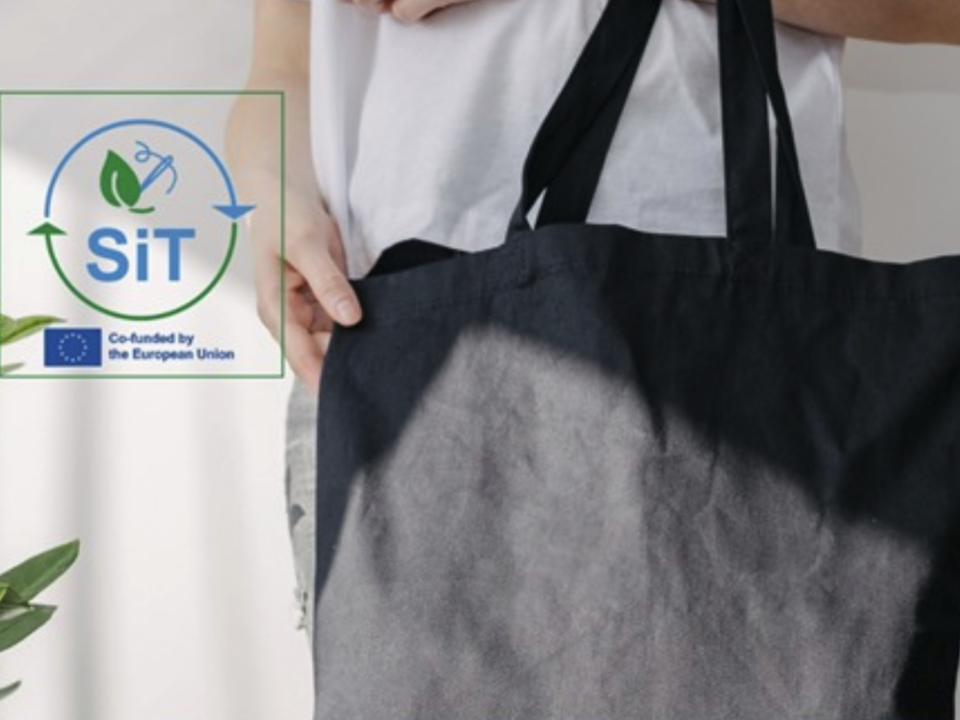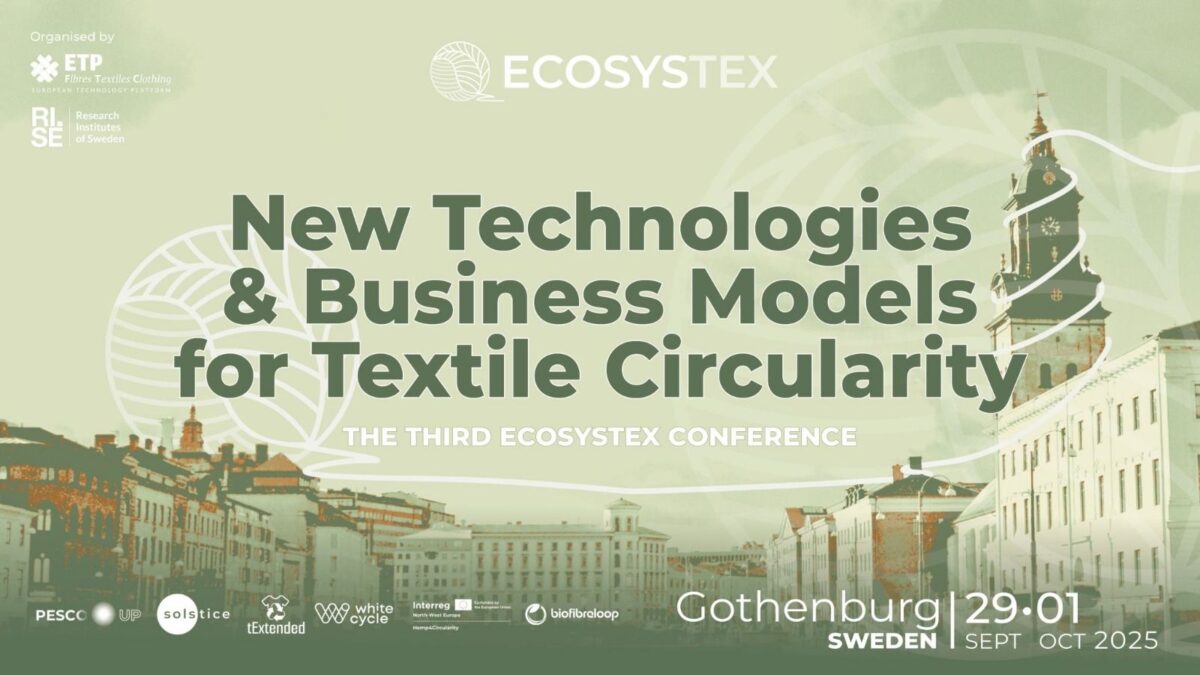
Gothenburg 2025
Gothenburg, 29 September–1 October 2025
The EU Projects Office at the Italian Chamber of Commerce in Barcelona (CCIB) in representation of SIT project, joined the ECOSYSTEX Conference 2025, the annual gathering that brings together Europe’s textile innovation community to accelerate the transition to a circular and biobased textile ecosystem. Organised by Textile ETP in partnership with RISE Research Institutes of Sweden, this third edition focused on “New Technologies and Business Models for Textile Circularity,” and offered two days of plenaries, hands‑on workshops, and networking, followed by technical visits.
Our projects office took part to connect with research projects, technology providers, policymakers and industry peers who are shaping the next generation of solutions for sorting, recycling, design for circularity and scalable business models. The conference provided a concentrated forum to understand EU policy developments, exchange practical know‑how, and identify collaboration opportunities for ongoing and future projects.
Conference highlights
Over 150 participants from across the value chain joined the 3rd ECOSYSTEX Conference, confirming strong momentum for circular and biobased textiles in Europe. Officials from the European Commission (DG ENV and DG RTD) outlined next steps for Extended Producer Responsibility (EPR) in textiles and separate collection, framing investment needs and timelines for a sector that generates an estimated 2.6 million tonnes of textile waste annually, with only about one‑fifth separately collected.
A rich programme of projects‑led workshops translated research into practice. Hemp4Circularity invited attendees to test strategies for a scalable European hemp value chain; PESCO‑UP walked the room through decision points to speed up textile‑to‑textile recycling from cotton/polyester flows; SOLSTICE used the 5R framework to co‑create pathways for consumer‑driven change and captured concrete pledges on a “Commitment Wall.” tExtended demonstrated digital and technological building blocks for a collaborative circular system, including the vision of a Hub4Circularity for Textiles to enable data sharing across the product lifecycle. BioFibreLoop showed how lignin can feed coatings and fibres for next‑generation technical textiles, while WhiteCycle showcased enzymatic routes to depolymerise complex PET‑rich textiles back to monomers for high‑quality re‑polymerisation.
Beyond the sessions, the community announced two new working groups: one on skills and education for circular textiles and another on data and standards harmonisation, to carry the momentum forward. The conference closed with site visits to RISE Research Institutes of Sweden and to the Swedish School of Textiles & Science Park Borås, highlighting the region’s strong bridge between education, research and industry.
We return from Gothenburg with a sharper understanding of the policy road‑map for textiles, especially the timing and scope of Extended Producer Responsibility and separate collection, and how these developments will shape pilots and investments over the next 12–24 months. This clarity allows our EU Projects Office at the Italian Chamber of Commerce in Barcelona (CCIB) to fine‑tune project work plans, stakeholder engagement and communication so that our actions anticipate regulatory milestones rather than react to them. Equally important, we are coming back with concrete collaboration leads across EU‑funded projects, clusters and technology providers active in textile‑to‑textile recycling, digital product data and design for durability and repair. Several contacts will be fast‑tracked into bilateral follow‑ups aimed at joint pilots, knowledge exchange and co‑funding opportunities.
Finally, we have a practical agenda to strengthen skills and data practices in our ecosystem. We will promote common vocabularies and metrics, support traceability by design, and test open interfaces that streamline cooperation along the value chain, from collection and sorting to material recovery and high‑value reuse. These steps will feed directly into our ongoing activities and upcoming calls for collaboration.
Explore the resources
ECOSYSTEX has made the materials from the event available:
- Day 1 plenary sessions (Big Stage) – View here
- Day 2 plenary sessions (Big Stage) – View here
- All breakout sessions & project workshops – View here
- Photo gallery – Explore here
What’s next
We will integrate the conference insights into our ongoing EU projects and outreach activities, starting with dedicated meetings with partners to prioritise joint actions on collection/sorting pilots, data harmonisation, and capacity‑building.
Save the date: the next ECOSYSTEX Conference is planned for September 2026 in Belgium — more details to follow on ECOSYSTEX channels.
About ECOSYSTEX
ECOSYSTEX is the European Community of Practice for a Sustainable Textile Ecosystem, facilitated by Textile ETP. It connects 70+ EU‑funded projects advancing circular and biobased textiles and regularly convenes the community through conferences, workshops and its Insights Series webinars.


